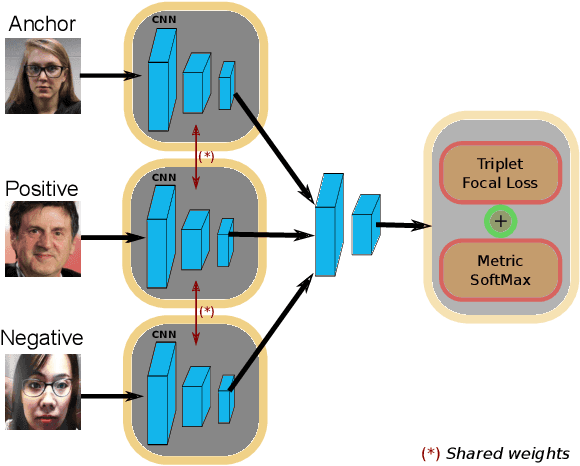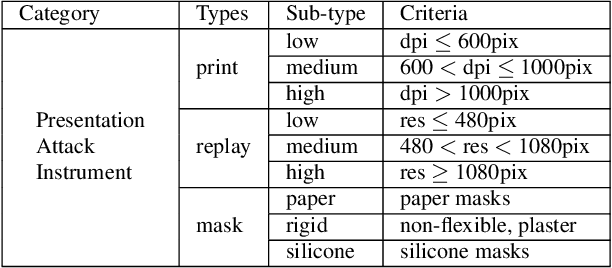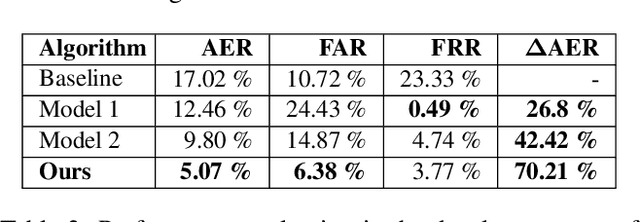Artur Costa-Pazo
Deep Anomaly Detection for Generalized Face Anti-Spoofing
Apr 17, 2019



Abstract:Face recognition has achieved unprecedented results, surpassing human capabilities in certain scenarios. However, these automatic solutions are not ready for production because they can be easily fooled by simple identity impersonation attacks. And although much effort has been devoted to develop face anti-spoofing models, their generalization capacity still remains a challenge in real scenarios. In this paper, we introduce a novel approach that reformulates the Generalized Presentation Attack Detection (GPAD) problem from an anomaly detection perspective. Technically, a deep metric learning model is proposed, where a triplet focal loss is used as a regularization for a novel loss coined "metric-softmax", which is in charge of guiding the learning process towards more discriminative feature representations in an embedding space. Finally, we demonstrate the benefits of our deep anomaly detection architecture, by introducing a few-shot a posteriori probability estimation that does not need any classifier to be trained on the learned features. We conduct extensive experiments using the GRAD-GPAD framework that provides the largest aggregated dataset for face GPAD. Results confirm that our approach is able to outperform all the state-of-the-art methods by a considerable margin.
Generalized Presentation Attack Detection: a face anti-spoofing evaluation proposal
Apr 12, 2019



Abstract:Over the past few years, Presentation Attack Detection (PAD) has become a fundamental part of facial recognition systems. Although much effort has been devoted to anti-spoofing research, generalization in real scenarios remains a challenge. In this paper we present a new open-source evaluation framework to study the generalization capacity of face PAD methods, coined here as face-GPAD. This framework facilitates the creation of new protocols focused on the generalization problem establishing fair procedures of evaluation and comparison between PAD solutions. We also introduce a large aggregated and categorized dataset to address the problem of incompatibility between publicly available datasets. Finally, we propose a benchmark adding two novel evaluation protocols: one for measuring the effect introduced by the variations in face resolution, and the second for evaluating the influence of adversarial operating conditions.
 Add to Chrome
Add to Chrome Add to Firefox
Add to Firefox Add to Edge
Add to Edge